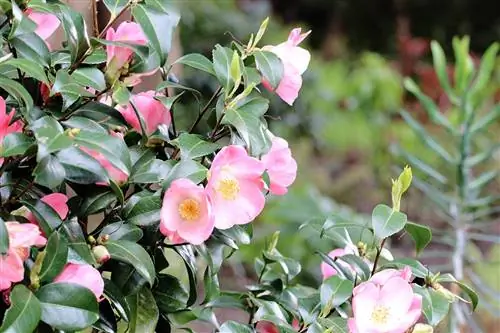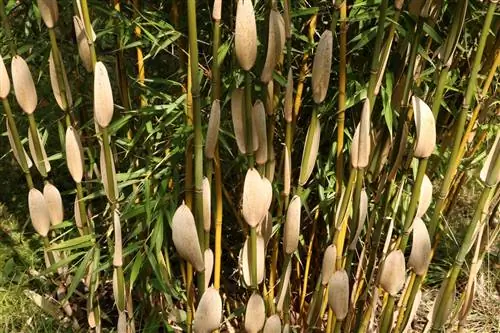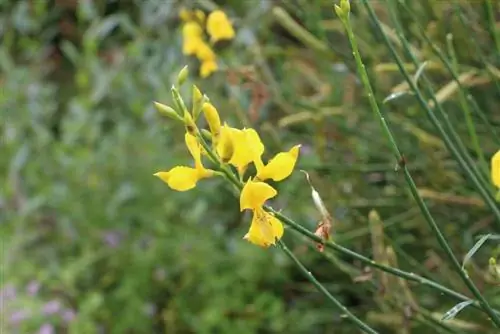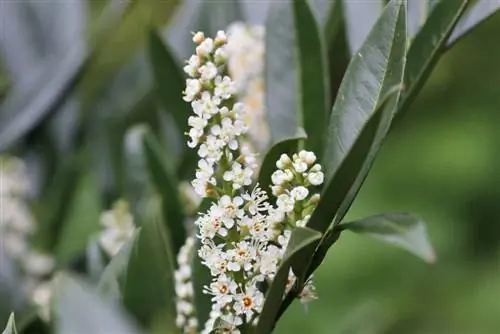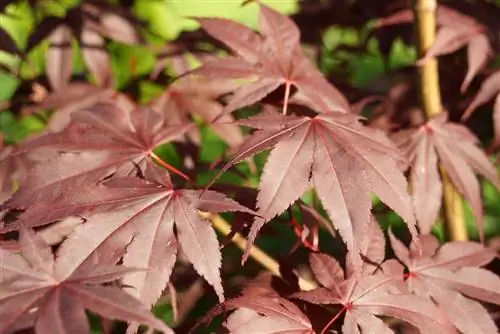- Author admin [email protected].
- Public 2023-12-17 03:39.
- Last modified 2025-01-24 12:45.
Are you planning to plant a Camellia japonica in your garden? That's a good idea! With its exclusive flowers, the camellia becomes an eye-catcher in the garden. Are all varieties hardy?
Camellia japonica
The camellia is an evergreen shrub. Its lanceolate leaves are leathery. They shine dark green. The flowering period of most camellia varieties cultivated in Europe begins in mid-February. The single or double flowers then appear in color variations between white, pink, pink and red. The flower splendor ends at the end of March or beginning of April.
Camellias reach a height of two to three meters in our latitudes. Individual specimens have already broken the 10-meter mark. The bushes grow to around two meters wide. Did you know that there are thousand-year-old camellias in Asia? Camellia bushes that are three hundred years old are known in Europe.
The Location
The optimal location for the camellia is protected from the wind. For example, she feels comfortable near a house wall. The magical plant prefers a partially shaded place. The flowers don't bloom in the shade. Direct sun should also be avoided. The camellia can fully develop its beauty in fresh, slightly moist and well-drained soil.
Note:
The Camellia japonica cannot tolerate drought. Since waterlogging also damages the beautiful garden plant, the soil should be well drained.
Overwintering camellias in containers
Camellias are usually cultivated in pots. In this way, the best location can be found regardless of the soil conditions. In winter, sensitive varieties can be moved to the winter garden or a frost-proof room.

Attention:
Camellias in pots that have already grown into sturdy bushes should be brought into their winter quarters as late as possible. If the Camellia japonica is moved to the protected winter garden or frost-proof cellar too early, this will have a negative impact on the flowers in the following year and the vitality of the plant.
Instructions:
- Check the Camellia japonica for pests or diseases.
- Remove dried parts of the plant.
- Shrink long, thin shoots with a clean, sharp knife.
- Check whether the substrate is permeable and the drainage holes are free, because waterlogging is a great danger, especially in winter.
- Place the plant in the winter garden or in a cool, bright room with a temperature between 10 and 15 degrees Celsius.
- Water when dry.
Note:
To prevent waterlogging, we recommend potting up the plant before overwintering, providing it with new drainage made of expanded clay or gravel and reinserting it.
Overwintering Camellia japonica outdoors
Only some species of camellias can be cultivated outdoors in Germany. In mild wine-growing regions they survive the cold season unscathed. Where there is a risk of longer periods of frost, the shrubs should be provided with winter protection. Outdoor camellias are only planted in spring so that they can form stable roots. Plant plants that are at least four years old outdoors. Younger specimens do not survive the winter outdoors unscathed.
Instructions:
- Check the plant for pests and diseases.
- Cover the root ball with a thick layer of leaves and brushwood.
- Wrap the above-ground part of the camellia in garden fleece or jute.
Note:
Camellia bushes in the open field are not pruned before wintering!
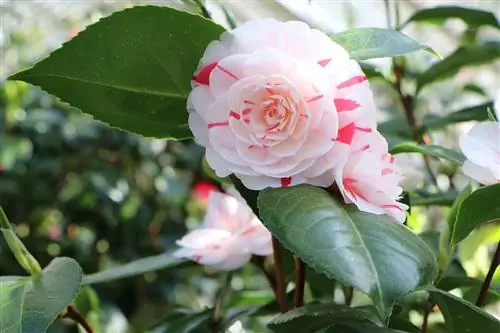
Winter-hardy varieties
You can plant robust varieties in the garden, especially in mild regions.
Considered to be conditionally hardy:
- 'Apple Blossom' with simple white flowers with winter protection down to -15 degrees Celsius
- 'April Rose' with double pink flowers with winter protection down to -18 degrees Celsius
- 'Berenice Boddy' with semi-double, delicate pink flowers with winter protection down to -20 degrees Celsius
- ‘Donation’ with semi-double pink flowers with winter protection down to -18 degrees Celsius
- ‘Dr. Tinsley' with semi-double light pink flowers with winter protection down to -15 degrees Celsius
- 'Hagoromo' with semi-double salmon pink flowers with winter protection down to -20 degrees Celsius
- 'Max Goodley' with double pink-red flowers with winter protection down to -15 degrees Celsius
- 'Tenko' with white simple flowers with winter protection down to -15 degrees Celsius

